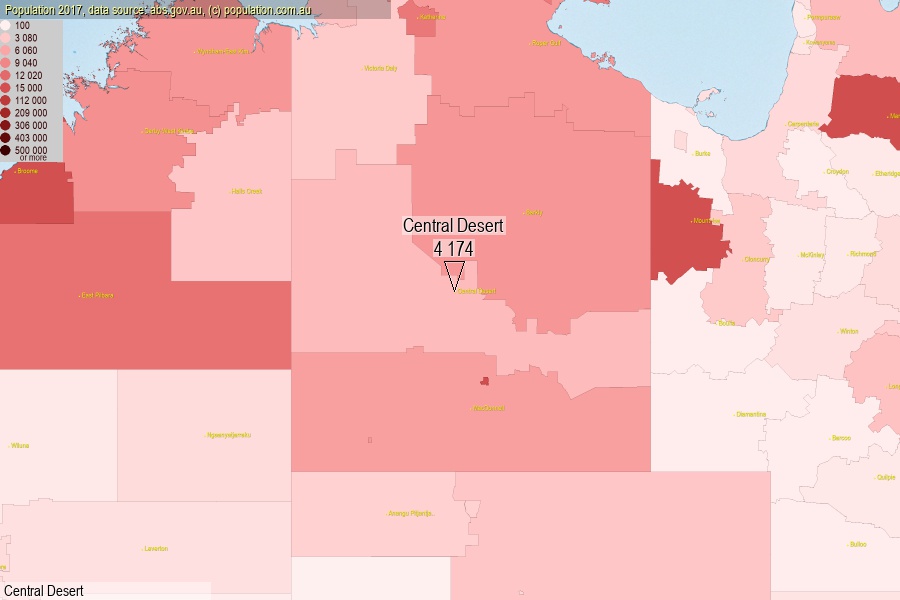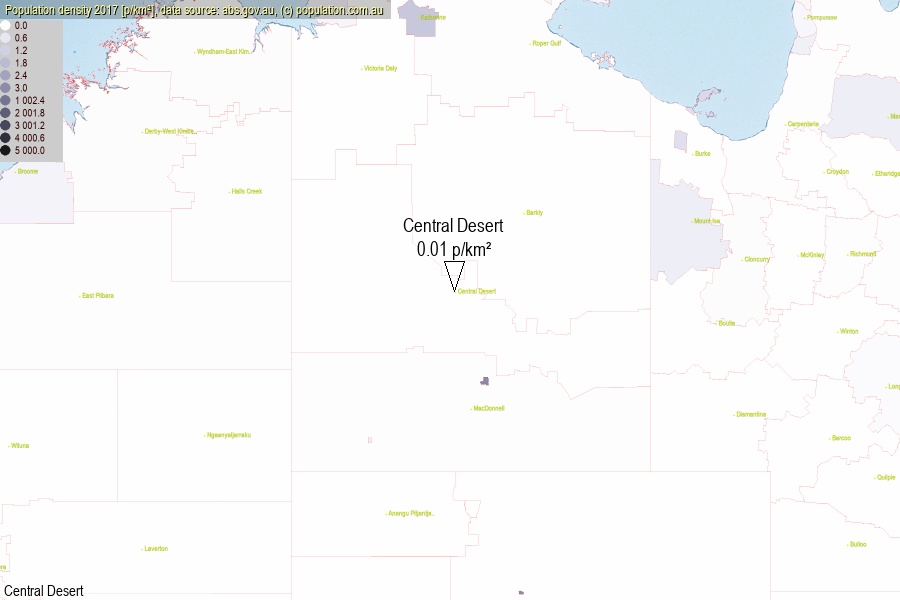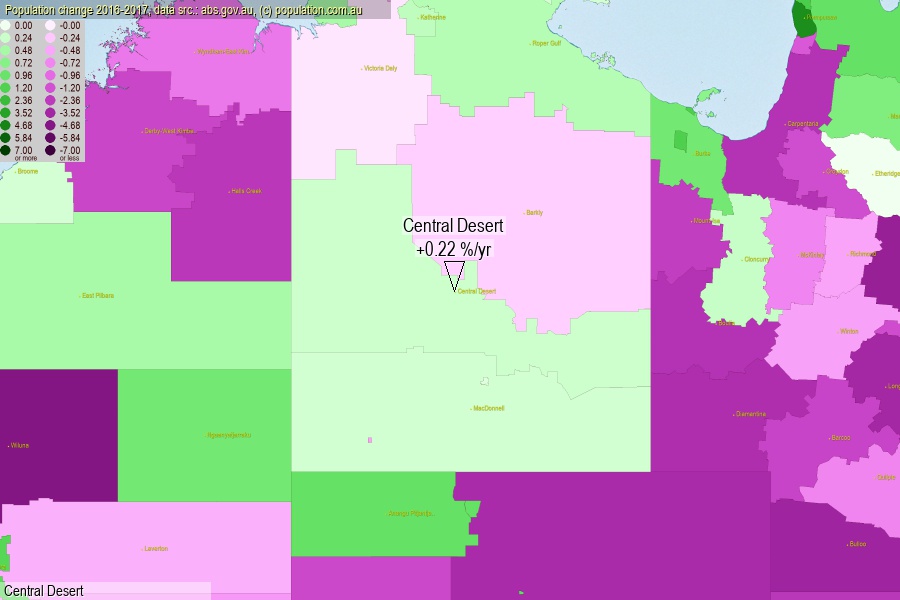 population.com.au
population.com.auLast official estimated population of Central Desert Regional Council (as Local Government Area) was 4 174 people (on 2017-06-30)[2]. This was 0.02% of total Australian population and 1.692% of NT population. Area of Central Desert is 281 312.00 km², in this year population density was 0.01 p/km² . If population growth rate would be same as in period 2016-2017 (+0.22%/yr), Central Desert population in 2025 would be 4 247. [0]



Click to enlarge. Central Desert is located in the center of the images.
Population [people], population density [p./km²] and population change [%/year] [2]
[2001-2002] -0.79 %/Y
[2002-2003] -1.47 %/Y
[2003-2004] -0.96 %/Y
[2004-2005] -0.79 %/Y
[2005-2006] -0.87 %/Y
[2006-2007] -0.83 %/Y
[2007-2008] -0.57 %/Y
[2008-2009] -0.73 %/Y
[2009-2010] -0.53 %/Y
[2010-2011] -1.15 %/Y
[2011-2012] +0.82 %/Y
[2012-2013] +0.95 %/Y
[2013-2014] -1.08 %/Y
[2014-2015] -1.32 %/Y
[2015-2016] -2.21 %/Y
[2016-2017] +0.22 %/Y
[0] Calculated with linear interpolation from officially estimated population
[1] Read more about LGA and Australian Statistical Geography Standard (ASGS) on abs.gov.au
[2] Population data from Australian Bureau of Statistics (Population and density: 2017; change: 2016-2017)
[3] Digital Boundaries: Australian Statistical Geography Standard (ASGS) 2016.